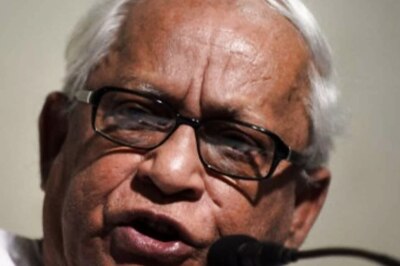
views
New Delhi: There's a lot of arthimetic dynamics involved in this decision.
The last few years have seen tremendous growth in individuals availing of home loans. Various factors such as better salaries, low interest rates, easy access, tax benefits, cheap property rates etc have contributed to this growth.
Most of the loans have been of 10-15 year maturity. However, with passage of time, as salaries have continued to increase and many people have received hefty bonuses, they are in a pleasant situation where they can prepay the loan in just 3-5 years time frame.
While, it may be mentally satisfying to be debt free, the question one needs to ascertain as to financially which option is better, without of course compromising on the safety.
Let us take a generic example and work out the financial implications under both the scenarios.
Assume that a person took a loan of Rs.8 lakh. After paying EMIs for last 3-4 years, he now has a loan outstanding of Rs.5 lakh, payable in next 6 years at an EMI of Rs.10,000. Total EMIs payable is Rs.7.2 lakh. Thus the interest component works out to Rs.2.2 lakh. And, say the bank would charge 2% as prepayment fee. Assume that the person has received Rs.5 lakh bonus, which he can use to prepay the loan.
Scenario 1 – Prepay the home loan
In case of prepayment, the person
- saves the interest he would have paid on the loan but
- ends up paying higher income tax as the deduction of interest would not be available (For simplicity I am not assuming any tax benefit on principal u/s 80C as he can avail the same benefit thru’ investment in other options),
- loses the earning opportunity if he had kept the Rs.5 lakh and invested it somewhere and
-- pays prepayment fee
Cash outflows in case a prepayment would comprise the Loan Amt – Rs. 5 lakh and the prepayment fee Rs.10,000 (2% of Rs.5 lakh). Thus total outflow works out to Rs.5.1 lakh.
Scenario 2 – Invest Rs.5 lakh in NSC/RBI Bonds and pay regular home loan EMIs
In this scenario, the person
- pays interest on the loan (Rs.2.2 lakh)
- saves income tax as the deduction on interest paid (Rs.66,000 – 30% of 2.2 lakh) and
- earns Rs.2.4 lakh on NSC/RBI Bonds in 6 years, which gives a post-tax inflow of Rs.1.68 lakh
- saves on prepayment fee
The net cash outflow under this option works out to Rs.4.86 lakh, thereby giving a overall benefit of Rs.24000.
This benefit can be further improved if the person takes some risk in equity (say 25% of the amount invested in diversified equity fund), which over a 6 year period is likely to give decent returns (and with nil capital gains tax).
The author is Vice President Nabriya Financial Services, Pune.




















Comments
0 comment